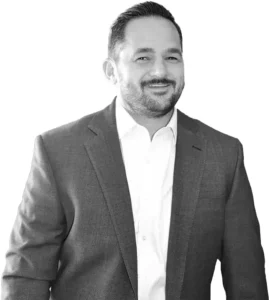Back to School
When I got out of high school, I didn’t go straight into college. I took a gap year, or better said, some gap years, before deciding to “go back” to college.
For me, this built a great appreciation for college based on the fact that I wanted to be there versus someone else (e.g., parents) nudging me to enroll. Also, paying my own way didn’t hurt as a motivating factor as well.
From memory, the format of most of my classes was similar: lecture, notes, exam – wash, rinse, and repeat. Yet, one class and one teacher have always stuck out in my memory. This particular professor had a larger-than-normal assigned reading list, required a daily recap (homework) of what we read, and even one missed entry could result in not passing the course. This was not the norm; it was definitely a challenge, and I was intrigued. Another unique feature of this course was that there wasn’t a daily prepared lecture, instead the professor came in each day, set out his stool at the front of the class, hopped on, and started each class with the same inquiry, “So, what questions do you have?” He actually threatened to lecture if we didn’t ask questions, so the entire class for the entire semester was simply Q&A. Sure, in his wisdom and experience, he did deliver the actual lecture via this format, yet he drew us students in feeling as if we were in the driver’s seat. Following this experience, I’ve become a glutton for Q&A, and I simply adore this format and the engaging dialogue it creates.
Staying Engaged
So, if you are a client of mine and you’ve always wondered why I try to craft my agendas around what’s top-of-mind for you, you now know why. I come into my meetings with an agenda in mind; I come prepared, but I also hold my agenda loosely. Why? Because I’m most interested in talking about what you’re interested in, and I trust you feel the same. I remember this college course because it’s the most engaged I’ve ever been as a student, and there is nothing I desire more than engaged clients.
With all of this in mind, I’m going to launch a TOM mini-series based on your questions. I’ve begun collecting real-life questions from my day-to-day that will find their way into these weekly musings. Please feel free to send your inquiries my way.
Now that the table has been set, off to your questions…
(1) Why do people buy annuities? And should I?
It would be impossible to answer this question, and others, without providing the disclaimer that all advice should be personalized, and your trusted advisor, who knows your plan and preferences best, will be your best source for advice.
Now, with that said, let’s first understand what an annuity is; an annuity is a type of insurance. The issue I often see when folks are discussing products like annuities is they jump right into assessing all the bells and whistles of the product versus focusing on the solution as a whole and when this solution (an annuity) is most suitable. When discussing insurance, we always want to start with this simple question: what specific risk are we insuring against? When it comes to car insurance, you are mitigating the risks and costs associated with a potential car accident. With an annuity an investor is attempting to address one of these three potential risks: longevity risk, spendthrift risk, and/or emotional risk.
An annuity, in its simplest form, converts a lump sum of money into a future series of distributions whether those distributions are for a lifetime(s), or a defined time period. So, if the old adage tells us that a bird in the hand is better than two in the bush, why would someone be interested in trading their bird-in-hand? Because they are seeking to mitigate risk. Some investors are spendthrifts, they are a magician of sorts, magically making money disappear right before your very eyes. For these investors, an annuity can be a helpful protection. Some investors are worried they may outlive their nest egg (longevity risk), and the guaranteed income of an annuity relieves that risk/anxiety for them. Still, others have realized through experience that they get motion sickness when it comes to market volatility, and the ability to mask that volatility via an annuity helps them from making regrettable trigger-happy investment decisions (emotional risk).
It’s simple: an annuity is an insurance product that should be used as a tool/solution to address some specific risk that would be insurable via an annuity. Suitable for some investors in some cases, and not suitable for others – as always, case dependent. Additionally, please do know this, attempting to hand off that perceived risk to an insurance company does not come without a cost. These costs will surface in both hard dollars (investment expenses) and limited access to the funds (illiquidity). Costs, along with a handful of other noteworthy considerations, should be assessed and analyzed thoroughly. It should go without saying, but navigating the world of annuities should always be co-piloted alongside a trustworthy source who is advising and acting in your best interest (fiduciary).
(2) What’s the difference between claiming social security at 62 versus 67?
Social security benefits are one of those nuanced topics, and the intent of this article is not to go into all of those granular details. Rather, let’s start with the simplest form answer to this question. In most cases, claiming your benefits early (at age 62) means a permanent reduction of benefits of roughly 30%.
This question typically seeks out a bit of a deeper answer, though. Folks want to know what’s best for their situation and to understand how punitive that 30% reduction really is.
For this question, you really want to focus on and understand breakeven points. I always like to think about breakeven points this way. Imagine setting up a foot race between my 4-year-old and my 6-year-old. If I let them both take off at the same time, my 6-year-old will take an early lead and will only build on that lead as the race progresses – he’s simply faster than his little brother. Now, imagine if I let little brother have a head start, what will happen? Eventually, big brother will catch little brother, and when exactly that happens will depend on how long that head start was. So, when it comes to social security, 62 is 30% “slower,” but he gets a 5-year head start. In most cases, it’ll take 67 about a decade to catch up.
Based on these breakeven points, the discussion often becomes this tension point between utility and maximization. Some folks will opt for the head start and enjoy the utility of that income in their younger years, while others will prioritize maximization, wanting to extract as much money as they can from the Social Security Department over their lifetime. I often land in the utility camp, but I know there is no correct answer here – both sides can be argued well, and there is a larger preference component at play here.
(3) Should I be funding a traditional IRA or a Roth IRA?
I feel like this question is actually quite simple, yet people make it so complicated and confusing. People tend to advocate for one account type (Roth or Traditional) as better or superior to the other when, in reality, “better” is always case-dependent.
I find that it helps to take the names – Roth and Traditional – and simply throw them in the trash. When we strip away the names, we can strip away all the preconceived notations that come along with those names. Let’s title these accounts by their primary feature, which is simply this: do you want to pay the taxes now or later? For a Roth, you pay the taxes now, and for a Traditional, you pay the taxes later.
So, how do we decide if it’s best to pay the taxes now or later? We have to make some assumptions and do a basic think-out-loud analysis of our situation. Maybe I’m working in California right now (high tax state) and plan to retire in Texas (no tax state), so it could make sense to pay the taxes later (defer). Maybe I will have an outsized inheritance in the future, which will drive me up to a higher tax bracket, which means paying taxes now seems more attractive.
You don’t have the crystal ball, and neither do I, so this assessment will need to be made based on reasonable assumptions. Maybe the unknowability of it will lead you to “hedge your bets” and fund both account types – pay some of the taxes now and defer some of the taxes to be paid later.
Again, I like to do a collaborative brainstorming session with my clients to talk through what their tax situation looks like currently and what we estimate it to look like in the future.
As a quick bonus note, that framing of taxes now versus later is the exact same framing I use when discussing Roth conversions. Another title, Roth conversions, probably needs to be trashed in order to be understood – it’s just a tax now or later equation.
Your Interests Interest Me
I’ll end today where we started. I’m most interested in talking about what you’re interested in. Just as I favor engaged clients, I also favor engaged readers. Send your questions my way because if they are a question on your mind, then they are a question on the minds of a handful of other students (readers) as well.
I hope you enjoyed today’s discussion, and of course, I’ll be back next week with more of my Thoughts on Money.







